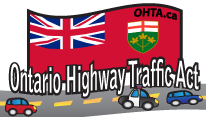A person drove into the side of my car last week. I have a copy of the accident report but I am confused about what he was charged with. I see Carless Driving and Failing to Produce Proof of Insurance but I don't understand the rest. Can anyone interpret this for me?
Accident Report Help
-
Stanton
- High Authority

- Posts: 2111
- Joined: Tue Feb 01, 2011 8:49 pm
- Location: Ontario
-
Posting Awards
Re: Accident Report Help
The two 8 digit numbers would be the ticket numbers for the respective tickets. No sure what the "&" means, typo maybe? Never seen a typed MVC report before.
Re: Accident Report Help
Much appreciated, thanks.
-
manwithaplan
- Jr. Member

- Posts: 77
- Joined: Sat Feb 05, 2011 4:21 pm
Re: Accident Report Help
Stanton wrote:The two 8 digit numbers would be the ticket numbers for the respective tickets. No sure what the "&" means, typo maybe? Never seen a typed MVC report before.
I've wondered about this as well, so I looked it up:
Ampersands (&'s) in URLsAnother common error occurs when including a URL which contains an ampersand ("&"):
<!-- This is invalid! --> <a href="foo.cgi?chapter=1§ion=2©=3&lang=en">...</a>
This example generates an error for "unknown entity section" because the "&" is assumed to begin an entity reference. Browsers often recover safely from this kind of error, but real problems do occur in some cases. In this example, many browsers correctly convert ©=3 to ©=3, which may cause the link to fail. Since 〈 is the HTML entity for the left-pointing angle bracket, some browsers also convert &lang=en to 〈=en. And one old browser even finds the entity §, converting §ion=2 to §ion=2.
To avoid problems with both validators and browsers, always use & in place of & when writing URLs in HTML:
<a href="foo.cgi?chapter=1§ion=2©=3&lang=en">...</a>
Note that replacing & with & is only done when writing the URL in HTML, where "&" is a special character (along with "<" and ">"). When writing the same URL in a plain text email message or in the location bar of your browser, you would use "&" and not "&". With HTML, the browser translates "&" to "&" so the Web server would only see "&" and not "&" in the query string of the request.
They're talking about urls, but I'd guess that it apply's in normal text as well?
Similar Topics
-
-
- failing to report accident ticket
- Posted in Failing to report a collision to a police officer
- By uali on
- Replies: 8
-
-
-
- No Accident. False police report Filed. Need Advice!
- Posted in General Talk
- By freedom94 on
- Replies: 2
-
-
-
-
- Hitting lamp post and fail to report
- Posted in Careless Driving
- By Hoangpham4696 on
- Replies: 9
-
-
-
- Fail to report - advice needed
- Posted in Failing to report a collision to a police officer
- By EphOph on
- Replies: 22
-

